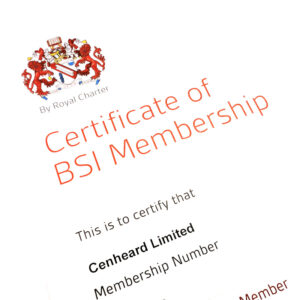When it comes to machinery, standards are regularly quoted on everything from OEM manuals to declarations of conformity. But are British standards mandatory for machinery, or can suppliers follow a different route? This blog post will cover the truths about what is and what is not law, while providing guidance on how to utilise the British standards to make products placed as safe as possible for the end user.

Is complying with British standards a legal requirement?
The short answer is no, in most cases. However, as is generally the case with UK legislation, the long answer is that it’s not always black and white. In the case of machinery, there are procedures that need to be followed when conducting UKCA conformity assessments. For specific types of equipment, these procedures differ between those that are manufactured fully in accordance with British standards, and those that are not.
Therefore, there are different legal requirements placed on manufacturers that do, and manufacturers that don’t follow British standards. As is always the case in UK law, now knowing is not a defence; so, having a good understanding of the relevant standards is essential in knowing which pathway to follow when conducting conformity assessments.
The relevance of British standards in UK law
There is a written memorandum of understanding between the UK government and BSi (the British Standards institute). In this memorandum, BSi is recognised by the UK government as the national standards body (NSB). This memorandum allows BSi to operate under the Royal Charter and confirms that British standards have a status of agreed national criteria developed and used to serve the UK public interest policy.
As a result of this memorandum, British standards, developed by BSi, are fully recognised by the UK government as a means of standardisation and as a provision of competition legislation.
While British standards are recognised by the UK government, this doesn’t mean that they must be followed to the letter. However, it does mean that they have a level of status that justifies their use in a court room. While it is not generally possible to be prosecuted for not complying with a British standard, standards can be used as evidence to justify non-compliance with relevant acts or regulations.
Alternative options for legal compliance
The intent of the written machinery standards is not to stifle industry or technological progress, but to provide a standardised approach to putting safe and quality machines on the market. For new machines and technologies, a specific British standard may not even exist yet. It is therefore possible to conduct a UKCA conformity assessment on a range machinery types, even though they do not comply with British standards. However, the Supply of Machinery (Safety) Regulations stipulate specific methods that must be used instead.
Protecting people and businesses
The underlying deliverable for any machine placed on the market is that it must be safe to use and maintain. By following relevant British standards, it can be evidenced in a court of law that adequate procedures and industry best practices were followed when certifying that the machine was safe to be put into service.
Without following relevant British standards, it must be evidenced that the alternative procedures and practices used did not put an unsafe machine into service. This can prove cumbersome as the practices and procedures used will need to live up to the expectations which BSi are expected to deliver upon.
Unless the machine is so ground-breaking that there are no standards to comply with; it’s seen as best practice to abide by relevant standards as it is easier to demonstrate that adequate practices and procedures were followed when questioned in a court of law.
Complying with specific machine type standards
There are numerous standards written for specific machine types., this is particularly true for machines that are seen to be the most hazardous. The Supply of Machinery (Safety) Regulations recognise this and provide a list of machine type categories for which particular methods of conducting UKCA conformity assessments must be followed. This list can be found in Annex IV of the regulations and these are often referred to as ‘annex 4 type’ machines.
Given the specific emphasis of these machine types in the regulations, it is not pragmatic to opt for a different approach, other than those provided for in the relevant standard.
Cenheard's observations

At Cenheard we assess machinery against regulations on a daily basis and we use standards as guiding principles for best practices. We observe a vast variety of applications of relevant standards, and it appears that, for the most part, manufacturers interpret and apply standards differently.
There’s rarely a right or wrong answer, there are so many interconnected standards that adhering to them all can be impracticable. We take the time to understand how manufacturers utilise relevant standards to make their machines as safe as possible. Our depth and breadth of knowledge and experience can help plug gaps in understanding. But as an outsider we often find that our impact lies in us providing a fresh set of eyes on a scenario.
Cenheard’s key objective is to work with manufacturers in providing guidance on a pragmatic approach to machinery safety that protects both people and business to both prevent incidents occurring and developing the evidence of adequate procedures been followed should an incident ever happen occur.
Are you in the stages of machine development and need a fresh pair of eyes on your project? Do you need a second opinion to double check you ticked all the right boxes? Contact Cenheard today and see how our passion driven team can provide peace of mind for your project.

